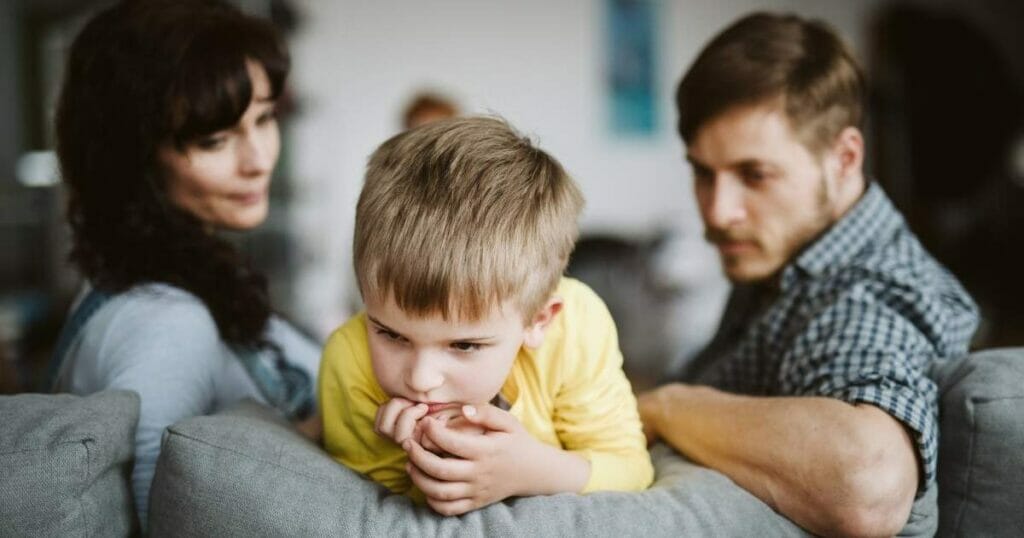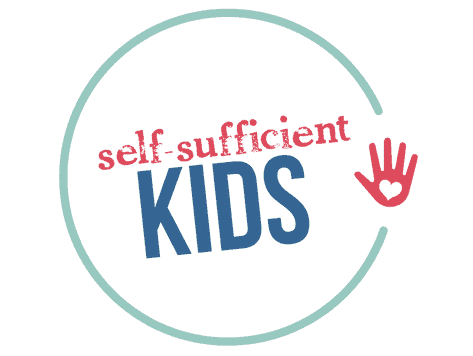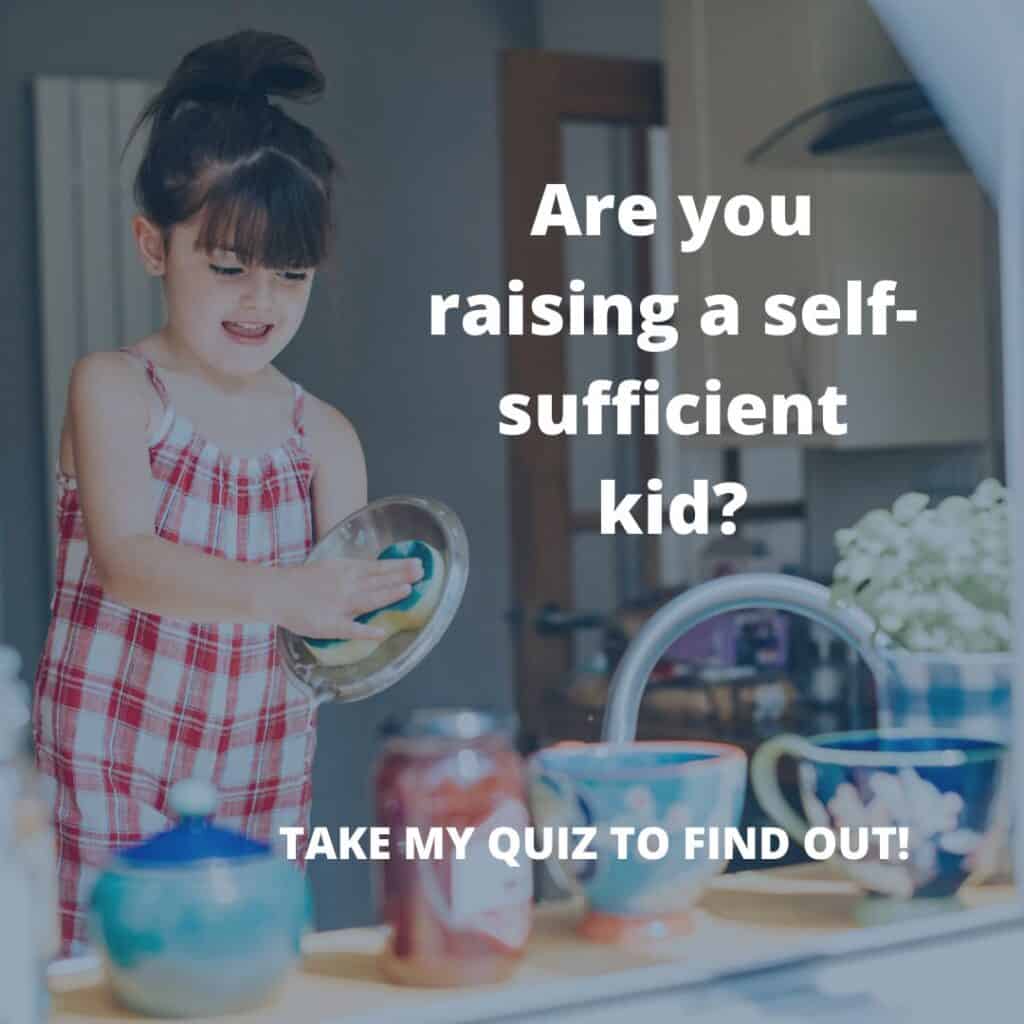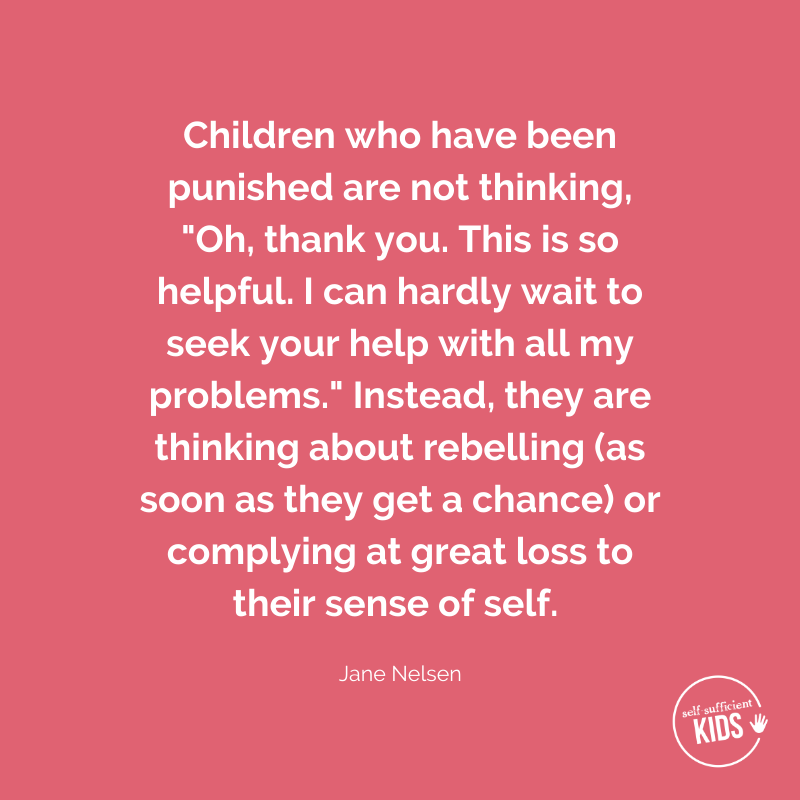Punishment vs Discipline: Why They’re Different & Why it Matters
Understanding the difference between punishment vs discipline can help guide us toward more effective parenting.

It’s not unusual for parents to be confused by the differences between punishment vs discipline.
In our modern language, the two words are often used interchangeably, even though they originally meant very different things.
And when it comes to parenting, several key differences distinguish the outcomes we wish to achieve – with our child’s behavior and our relationship with them.
The contrasts between punishment vs discipline boil down to your child or teen:
- Truly understanding that what they did was wrong or misguided
- Having the knowledge and tools to do better in the future
- Feeling like they have a strong, loving relationship with their parents
What does punishment mean in parenting?
To punish a child means to make them suffer for wrongdoing.
When a child is punished, the underlying belief is that the child will behave better if they become fearful of repeating the offense. It is believed that only through suffering will a child’s fear grow until they are uninclined to repeat the bad behavior.
One common characteristic of punishment is that the consequence imposed on a child is usually unrelated to the offense. There is no logic behind it, often because the aim is simply to make the child suffer in the most effective way possible.
A few examples of punishment include:
- Placing a child in the corner of a room after they grab a toy
- Taking away a child’s phone after they didn’t clean their room
- Grounding a teenager after they stay out past their curfew
- Not allowing a child to eat dessert after getting in an argument with their sibling
- Hitting or spanking a child for talking back
Do you notice a trend? Punishment often involves taking away objects or privileges that are of great importance to the child. In the case of spanking, the punishment, or intended suffering, is brought about by physically hurting the child and causing them to lose their dignity.
The drawbacks of punishing kids
While in many cases, punishing kids for wrongdoing does work, its effects are usually short-sighted and short-lived.
If a child is punished because they’re doing something wrong, that child will likely stop. And it’s also possible that the child will become fearful enough of suffering that they won’t repeat the offense – at least for a period of time.
But even if punishment is effective in the moment, the drawbacks are many. They include:
- Punishment doesn’t teach kids how to do better next time.
- Punishment doesn’t help kids grow in their understanding of appropriate behavior or how to make good decisions.
- Punishment causes children to think poorly of themselves or feel revengeful.
- Punishment doesn’t address the unmet need the child felt when they misbehaved.
- Punishment causes the parent/child relationship to suffer, making it more difficult for parents to coach, influence, communicate, and bond with their children.
See related: Why Punishment Doesn’t Work
What does it mean to discipline a child?
Taking a look at the word itself, discipline shares the same root as the word disciple. A discipline is essentially a student – someone who needs instruction. Therefore, discipline is the act of teaching or guiding the disciple.
From a parenting perspective, discipline – especially positive discipline – is the act of teaching kids the best way to behave and act in the world at large.
Characteristics that distinguish positive discipline are:
- Teaching children how to do better: The aim of positive discipline is to teach children how to do better, not to cause them to suffer.
- Identifying why a child is misbehaving: Kids often misbehave for a reason. If we can find the reason and address it, the source of the misbehavior disappears.
- Showing a child respect: No one wants to listen to or be a disciple of someone who is disrespectful.
- Demonstrating active listening to a child: A primary way we can show our children respect is by listening to their thoughts and feelings and validating them.
- Focusing on solutions: Instead of punishing kids for wrongdoing, parents can work on solutions to problems.
Unquestionably, the best teachers are those who connect with their students in a way that makes their students want to listen, pay attention, and learn.
So to successfully discipline our children, we first need to establish a connected, loving relationship that will inspire kids to behave better in the moment and long term.
The benefits of disciplining instead of punishing children
Here are a few of the benefits kids gain when parents use discipline instead of punishment:
Kids learn emotional regulation: Since a major component of discipline is to teach children, as parents embrace emotions and help children work through them, kids learn for themselves how to better regulate their emotions.
Kids learn social skills: Often when kids misbehave it’s because they’re confused or frustrated with a social situation. Using positive discipline, and encouraging kids to problem-solve, helps kids learn the best or most productive ways to respond.
Kids strengthen their problem-solving skills: As children get older, parents can respectfully encourage and support them in coming up with solutions to the problems they face. Problem-solving is shown to be one of the essential skills our children will need as they get older.
Parents are in a better position to influence their kids: When parents punish their children, they create a barrier in their relationship. When parents use positive discipline, they’re strengthening their relationship with their kids by building an emotional bond.
What’s the difference between punishment and consequences?
Often not a lot.
Many parents impose consequences on their children thinking they’re teaching them a lesson, but in reality, those consequences carry all the negative effects of punishment.
Often a consequence isn’t related to the situation, even though the adult thinks it is. And the consequence isn’t respectful or even reasonable.
In fact, without being completely conscious of it, parents will often impose consequences with the intention of causing their child to suffer, not to teach them a lesson.
Here are the characteristics of a consequence that does teach. Note that all four of these characteristics need to be present for the consequence to be effective:
- The consequence is related to the situation. For example, after a child draws on a wall with a crayon, a related consequence would be that he has to clean the crayon marks off the wall.
- The consequence is respectful. A consequence isn’t respectful if it’s demeaning, humiliating, or causes pain. It also isn’t respectful if it comes across as dictatorial.
- The consequence is reasonable. Having a child clean the crayon off the wall and also wash the floor and windows is not a reasonable consequence.
- The consequence is revealed in advance. Sometimes if a consequence isn’t revealed in advance, it can easily be misconstrued as a punishment. Whenever possible, a parent should set expectations in advance so the child is aware of the consequence of his actions.
Since finding a consequence that meets all four of those criteria can be challenging, other parenting tools are often more effective, such as encouraging kids to problem-solve, offering limited choices, creating a routine, or discussing the issue during a family meeting.
Getting past punishment and using positive discipline
Often parents punish their kids without even realizing that the motive behind punishment is to cause suffering. If asked, these parents would never say that’s their intention.
That’s because their parents imposed the same punishment on them. Often these adults are simply unaware of better ways to address their kids’ misbehavior that leads to more positive and successful outcomes.
It can be hard to break old habits and thought patterns, and anyone trying to do so will more than likely slip up from time to time.
Through practice, though, turning to positive discipline instead of punishment can lead both parent and child on a happier, more peaceful path that guides kids toward greater confidence, self-esteem, and general well-being.
Interested in learning more about positive discipline? Check out these resources:
How to Discipline Kids While Reaching Their Hearts at the Same Time
Why Your Misbehaving Child Won’t Stop and What to Do About It
Want to Raise a Self-Sufficient Kid? Using This Parenting Method is Essential
Raising Self-Sufficient Kids with Positive Discipline
What to do next…
1. Subscribe to Self-Sufficient Kids’ email list.
Like what you read here and want to learn more? Every Thursday I’ll send you one parenting tip about raising self-sufficient kids and creating the peaceful relationship you yearn to have with your child. Click here to sign up.
2. Take one of my quizzes!
Find out if you’re raising a self-sufficient kid (click here) or if you’re doing too much for your kids (click here). At the end of each quiz, you’ll be asked to provide your email address to see the results.
3. Get your kids started on chores.
Learn how to get your child started on chores (& keep them motivated + avoid power struggles) by enrolling in my Get Your Kids Successfully Started on Chores course. Click here to learn more and sign up.

About Kerry Flatley
Hi! I’m Kerry, the mother of two girls and a certified parent educator. I believe it is possible for parents to have a supportive, loving, and warm relationship with their kids while raising them to be independent and ultimately self-sufficient. Over the years, I’ve read numerous books and articles that support this belief and I’ve put these ideas into practice with my own kids. Read more about me and Self-Sufficient Kids here.


